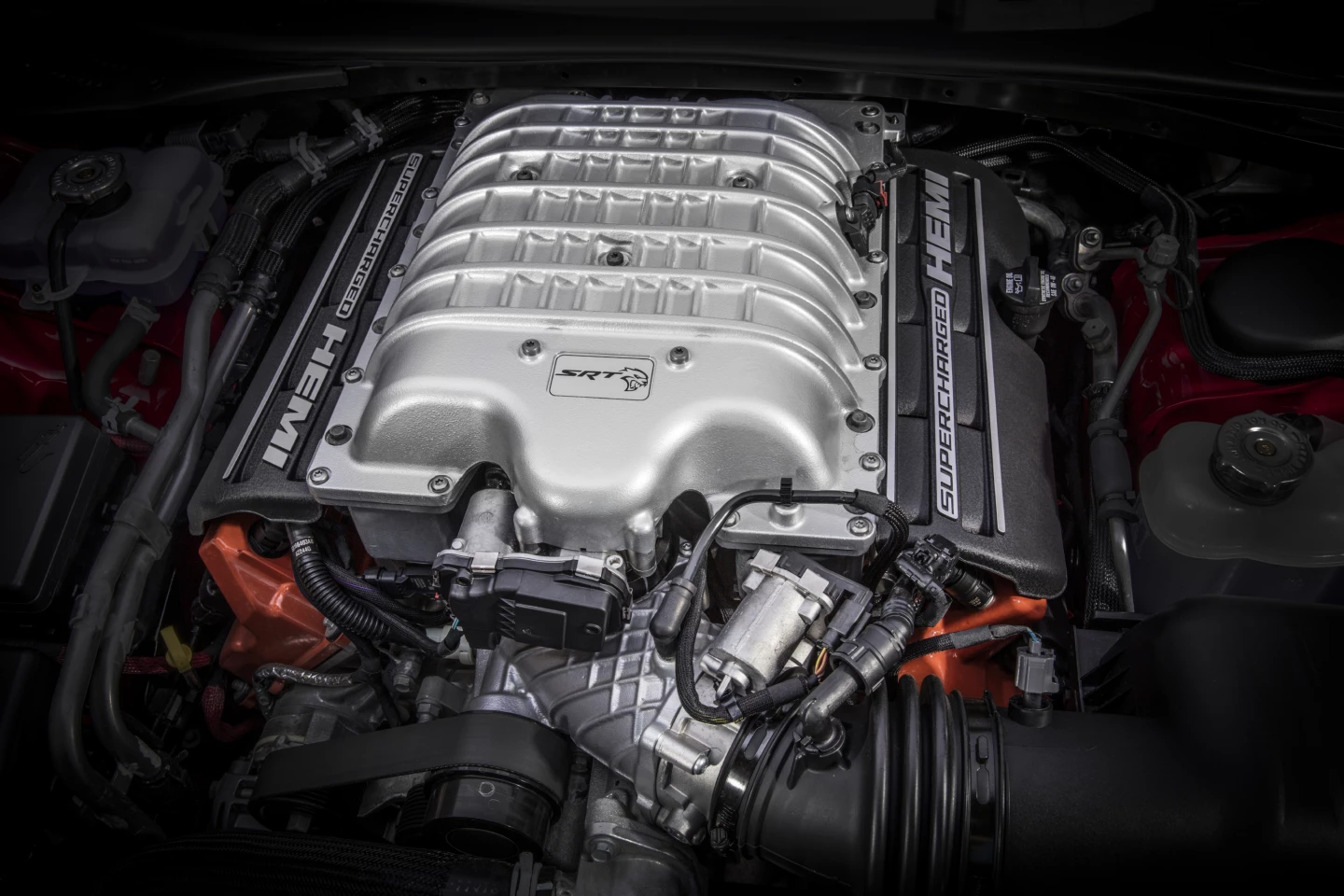For anyone who hasn’t been paying attention, Dodge has become a performance brand ... in the old-school, loud pipes, "bigger is better" crate engine kinda way. As the last remaining throwback muscle car maker, the company keeps the American dream alive with its lineup of throaty V8s pushing past the 800 horsepower mark – such as the Challenger Hellcat Redeye.
While other iconic muscle and pony cars, like the Mustang and Camaro, have largely moved into the sports car category with smaller, turbo’d engines and lighter handling, the big Challenger remains the last truly "only in America" heavy speedster – one that’s capable of straight line runs that might break the sound barrier, if your ears weren’t already deaf from the exhaust roar. It follows the truly American "wake up the neighborhood on startup" tradition of seriously loud-and-proud large displacement, dino-burning good times.
We’re entering an age where electric cars will become the new performance standard. Nearly every output, speed, and "more is better" record being set in automotive seems to have some kind of electrification involved. Unless you’re looking at Dodge.
The Challenger series of coupes has been a mainstay at Dodge for a long time. Swapping names with its Charger sibling upon reintroduction in the 2000s as a new version of the icon of the 1970s, the Challenger has become our era’s version of the last gasp of Americana in muscle. Not surprisingly, the combination of sinister design elements, powerful looks (with sound to back that up), and a regular presence at drag strips across the nation have cemented the Challenger as the blue collar go-to. Some might sneer at this, but there’s a certain amount of hooah involved that appeals to many people in a clear way. Hence the continual "shove more HP in there" mentality at Dodge continues to be rewarded.

The 2020 Dodge Challenger comes in an array of models with four engine options. These start with a well-done V6 that outputs just over 300 horsepower (223.7 kW) and that can be coupled with all-wheel drive. Then there’s the now-legendary 5.7-liter Hemi found in the R/T model followed by the 6.4-liter beast in the R/T Scat Pack, which adds over 100 horses to the ticket. And then there’s the Hellcat series.
Hellcat is so named because once you get to extremes, you can’t have just any stupid name to go with your brand. You need something that says it all. If Dodge had gone with a name like "MegaPower" or "Muscletron 2000," it would have been relegated to the one-hit-wonder bin alongside all of the other big hair, power metal bands of the 1980s. Instead, it chose "Hellcat." To that are added terms like "Demon", "Redeye" and "Widebody." Not to mention "High Output." If you wanna be the Metallica of horsepower, you gotta have cool names.
The SRT Hellcat model has 717 horsepower (534.6 kW) as standard. Upgrading to the Hellcat Redeye model bumps that to 797 (594 kW). Going to the Super Stock nets another 10 on top of that. Do the math. That’s a whole lotta ponies for one car. And there’s torque to match, riding at 707 pound-feet (958.5 Nm) in the Redeye we drove.
And by "drive" what we really mean is "hang on for dear life, this sucker idles at 150 mph." We’ve driven a couple of iterations of the Hellcat model before. They’re a load of fun, but as we’ve pointed out, they toe the line into "certain death by vehicular accident" territory. Controlling that much muscle requires some skill, and it’s not a skill you can learn by reading a book. It’s learned hands-on. We recommend starting with the Black Key and working up to that Red one.

Knowing that, though, there’s a huge amount of thrill that goes along with that kind of responsibility. Alongside the ability to squeal the tires at 75 mph (121 km/h) without a downshift (yes, we did that) and the real possibility of spinning the car around four lanes in a burnout circle of potential control-losing death (we did not try that), there’s the sense of triumph that comes from the center of the gut when you have that much power at your command. That kind of nearly unbridled power is thrilling, and that thrill doesn’t go away. Even after you’ve learned the limits and might feel you’ve tamed the beast, there’s always the chance that a wrong move from a stoplight will result in three-digit speeds and a long trail of rubber and smoke ... and probably end with a telephone pole’s involvement.
We’ve driven "we’re gonna die!" vehicles before. None of them are on the same level as the 2020 Dodge Challenger SRT Hellcat Redeye for its sheer adrenaline. Which is why nothing in this review has mentioned the infotainment, the size of the interior, or the comfort of the seats. Once you’re in a Challenger Hellcat of any type, those things matter little. It’s all about steering wheel grip and sphincter pucker.
And that, in a nutshell, is the whole point of the loud growl, the powerful intake sucking whine, and the hellish exhaust sounds of muscle cars. It’s something that grabs the medulla oblongata and squeezes it a little, pushing heart rates to extremes.
The Challenger SRT Hellcat series starts at US$58,995 with our 2020 Challenger SRT Hellcat Redeye Widebody model ringing in at $92,445.
Product Page: 2020 Dodge Challenger











